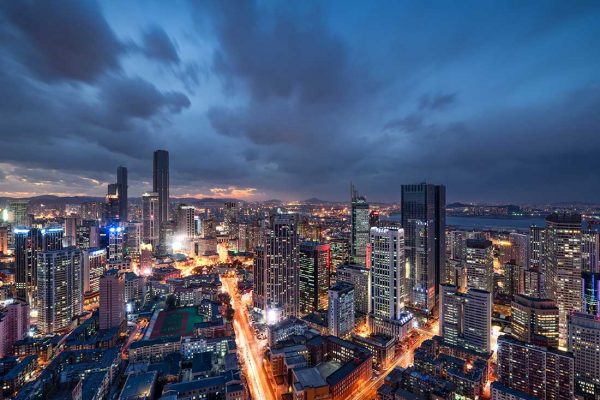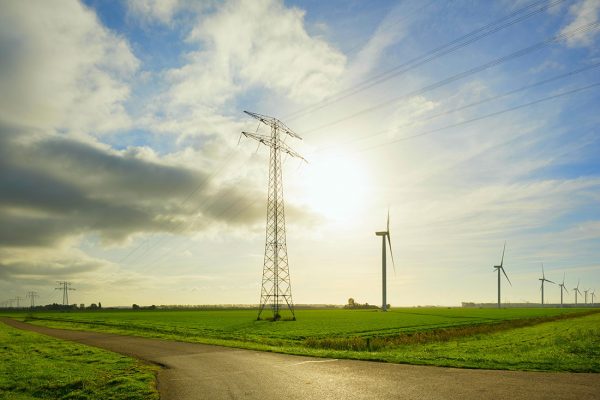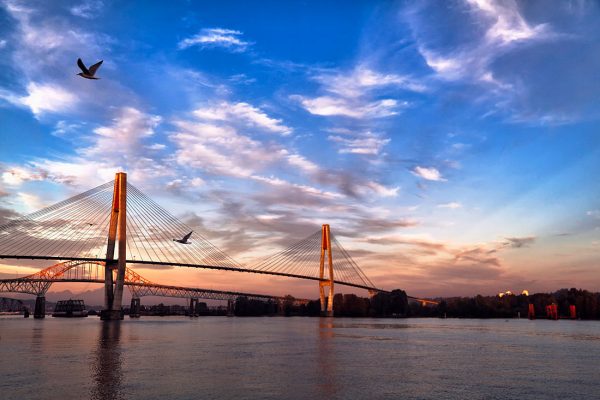As the attention of our communities and economies remain fixed on mitigating the effects of the global pandemic, Jean-Pascal Tricoire urges us to not lose sight of our planet’s biggest threat: climate change.

Technologies Polar Bear
March 7th, 2021
The past year has certainly provided its fair share of challenges. Our communities are working collectively to endure and overcome both COVID-19 and the accompanying recession the pandemic has helped cause. While we understandably have our attention fixed on ending these urgent dilemmas, we must not lose sight of the biggest looming threat to people and our planet: climate change.
The primary driver of climate change is carbon emissions, and 80% of carbon emissions are energy related. To confront this climate crisis, we must reduce these emissions drastically. In fact, we must halve our carbon footprint in the next 20 years. This demands that we fundamentally change how we produce and consume energy.
At the same time, there are still two billion people who today live without access to energy and digital. That’s two billion people who live without basic comforts and opportunities. Without digital, they do not have access to education and economic inclusion.
This is the paradox we have talked about for some time: how can we progress our society, so every individual on Earth secures access to these basic human rights, while simultaneously taking drastic action against the irreversible impacts on our environment?
This is Schneider Electric’s purpose. To empower all to make the most of our energy and resources, bridging progress and sustainability for all, connecting people across the globe to reliable energy and resources while cutting our emissions in half. Our mission is to be the digital partner of our customers for sustainability and efficiency.
There is an equation to resolve the climate paradox. It comes down to two technological revolutions and four priorities. The technology is here, the action is up to all of us.

The first is digitization.
Digital has revolutionized the way we work and live. The first phase of digital connected people to people, using technology to advance our ability to communicate, work and live. Think about how different 2020 would have been without the digital tools and connectivity we have developed over these past 20 years: mobile phones, internet, video conferencing. The next phase will revolutionize how people interact with their environment, in our homes, buildings, factories and cities. It is the IoT revolution, the second phase of the internet, where communication occurs from machine to machine. With digital technologies, energy will only be used when and where it is needed.
The second is electricity.
Electricity is critical as it is the only energy that can be decarbonized. Electricity is not new, but the way it is produced and consumed is changing. It will be powered by renewables, making it clean and green.

In accordance with The Paris Agreement, to address climate change, we need to limit the rise in global temperature to 1.5⁰C. Based on these two revolutions, there are four priorities that need to be addressed in parallel to solve the issue of climate change.
First, we need a step up in efficiency.
The first step is simply to eliminate any waste of our resources due to inefficiencies in our systems. Digital technology and connectivity are the way to disrupt efficiency. By connecting everything, software, analytics and AI can optimize consumption, achieving both process and energy efficiency. If we connect everything in our environments, this could save a huge part of our resources – our buildings and industries could become 30% more efficient.
Second, we must move towards circularity.
The next step is to transition to the circular economy, where business models are designed to reuse all resources, not just limit waste. Digital is paramount to this process. It is estimated we can achieve more than 70% energy efficiency with steel recycling for example.
Third, we must transition electricity from 20% to 40% of the energy mix.
Any energy we do use needs to be electric. Right now, just one fifth of our energy usage is electric. We must double the proportion of electric energy we use today. And it is already underway. A big migration is occurring in transportation with electric vehicles, and in buildings, for heating, cooling, and to create human-centric and net-zero buildings. The world will invest more in electricity in the coming 20 years than it has from its creation.
Fourth, we must focus on decarbonization, shifting renewables from 6% to 40% of the energy mix.
This is the part where electricity, an old technology, evolves. Rather than using carbon-heavy sources like fossil fuels, tomorrow’s electricity must be made from clean sources such as solar or wind. The good news is that in most parts of the world, renewables are already the cheapest sources of energy generation.

We are living in a unique time in history. We are the first generation who fully appreciates the dangers of climate change. And we will be the last generation who still has time to change our trajectory. We have a big challenge ahead – and there is no one who can face it but us.
Digital and electric. Smart and green.
These are the four words that will redefine our future.
This message was part of Schneider Electric’s Innovation Summit World Tour 2020. Making 11 virtual stops around the world, Schneider Electric welcomed over 20,000 customers, partners and students through the virtual doors and into the discussion on how we can build a more resilient and sustainable future together.
A searchable and comprehensive guide for specifying leading products and their suppliers
Keep up to date with the latest and greatest from our industry BFF's!

In the pursuit of an uplifting synergy between the inner world and the surrounding environment, internationally acclaimed Interior Architect and Designer Lorena Gaxiola transform the vibration of the auspicious number ‘8’ into mesmerising artistry alongside the Feltex design team, brought to you by GH Commercial.

Channelling the enchanting ambience of the Caffè Greco in Rome, Budapest’s historic Gerbeaud, and Grossi Florentino in Melbourne, Ross Didier’s new collection evokes the designer’s affinity for café experience, while delivering refined seating for contemporary hospitality interiors.

The Sub-Zero Wolf showrooms in Sydney and Melbourne provide a creative experience unlike any other. Now showcasing all-new product ranges, the showrooms present a unique perspective on the future of kitchens, homes and lifestyles.

Savage Design’s approach to understanding the relationship between design concepts and user experience, particularly with metalwork, transcends traditional boundaries, blending timeless craftsmanship with digital innovation to create enduring elegance in objects, furnishings, and door furniture.

Simon Liley, Principal Sustainability Consultant at Cundall, writes about how cyberpunk dystopias haven’t (quite) come to pass yet – and how designers can avoid them.

Beau Fulwood and Alison Peach on returning to a low-tech, first-principles concept of design as a strategy to combat climate change.
The internet never sleeps! Here's the stuff you might have missed

Focusing on facade and green design, this pair of office blocks is designed to meet the most contemporary demands of workplace design.

Nazcaa boasts a statement design for a singular restaurant and it’s right at home on the Dubai hospitality scene.